Johnson & Johnson Family of Companies in Japan, in collaboration with TOMODACHI Initiative, select Eight Tohoku participants for the inaugural year of the TOMODACHI J&J Disaster Nursing Training Program

Johnson & Johnson Family of Companies in Japan* (Headquarters.: Tokyo Chiyoda-ku, hereafter “Johnson & Johnson”) and The TOMODACHI Initiative are pleased to announce that the participants for the “TOMODACHI J&J Disaster Nursing Training Program” have been selected.
Johnson & Johnson, as part of their efforts to invest in local communities as outlined in the company’s “Credo” which guides global values, has partnered with the TOMODACHI Initiative (hereafter “TOMODACHI”), a public-private partnership between the U.S.-Japan Council and the U.S. Embassy Tokyo. Johnson & Johnson supports the TOMODACHI J&J Disaster Nursing Training Program, which is a three-year commitment from 2015 to 2017 that aims to support capacity building of nurses in the Tohoku region by focusing on the field of Disaster Medicine and/or Nursing.
The program seeks to fulfill this purpose of capacity building and leadership development by focusing on the field of disaster medicine by carrying out a program with three elements: 1) Pre-Trip Seminars 2) a U.S. Study Tour and 3) Post-Trip Symposiums.
The Pre-Trip Seminars will bring specialists in the field of Disaster Medicine and/or Nursing from the U.S. to Japan in order to help prepare selected program participants for their U.S. Study Trip. In August 2015, the participants from Japan will head to New York and Washington, D.C. for a two-week study tour, where they will meet with their counterparts and leaders in the field of Disaster Medicine and/or Nursing and visit the headquarters of Johnson & Johnson in New Brunswick, New Jersey. Upon their return to Japan, Post-Trip Symposiums will be held where the participants will have opportunities to share their findings and lessons learned from the U.S. Study Tour with their colleagues in Tohoku, as well as with people in other regions of Japan interested in learning about Disaster Medicine and/or Nursing.
About Johnson & Johnson Family of Companies in Japan
Johnson & Johnson Family of Companies in Japan consists of Johnson & Johnson K.K. with Consumer Company, Medical Company and Vision Care Company and Janssen Pharmaceutical K.K.
Students Biographies for the TOMODACHI J&J Disaster Nursing Training Program
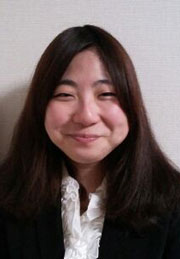 Ayana Iwabuchi
Ayana Iwabuchi
School: Ishinomaki Red Cross Nursing School
Hometown: Ishinomaki City, Miyagi Prefecture
“Through this program, I’d like to learn about issues related to disaster nursing and community nursing, and bring that back to my own community. As a healthcare provider, I want to make a contribution to those in need all around the world through my knowledge of healthcare.
I am interested in the differences between international healthcare systems and Japan’s healthcare system. In the future, I want to help areas that need medical care from a disaster as a nurse and provide service to people not just in Japan, but overseas as well. In order to make this happen, I need to acquire the skills and knowledge that are being taught overseas through programs like this. By participating in this program, it brings me a step closer to my dream. Also by representing the victims of the Great East Japan Earthquake, I look forward to sharing my experiences and the actions we took after the earthquake. Then, when a similar disaster happens in other countries, I hope they can remember my story and use it as an example to prepare and act.”
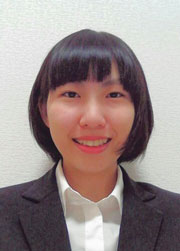 Nao Onodera
Nao Onodera
School: Kesennuma City Hospital Nursing School
Hometown: Kesennuma City, Miyagi Prefecture
“I would like to share our experiences from the Great East Japan Earthquake, talk about the importance of life and the links between people that I learned, and my appreciation for the support we received from the United States during the disasters. The U.S. military came to save many lives by bringing food and water, searching for missing people in locations where the tsunami hit, and clearing out the wreckage of many buildings. I want to create awareness about the remaining issues after the disaster by connecting with people I will meet on this program in order to create a brighter future.
First, I would like to see with my own eyes what the current medical situation is in the United States to see how healthcare is being provided and by whom. I have only been to a small local hospital in my town, so I look forward to witnessing the advanced technology the U.S. hospitals are using. Furthermore, many people suffer from PTSD. Even four years after the disaster, my father still suffers from nightmares about the tsunami, and he is certainly not alone. Mental care will continue to be a need. I would like to learn the methods that are used in the U.S. for mental healthcare to utilize those skills when I become a nurse. Through this program, I look forward to broadening my horizons to find new ways to look at Japan and the disaster-stricken areas in hopes of finding further opportunities for improvement.”
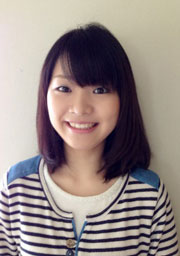 Mikiko Sato
Mikiko Sato
School: Miyagi University School of Nursing
Hometown: Sendai City, Miyagi Prefecture
“Having experienced the Great East Japan Earthquake, I am currently studying nursing with hopes of working in the field of disaster nursing in the future. Immediately after 3.11, life was extremely unstable as all of our lifelines had been severed and there was no way to verify my family’s safety. Two weeks after the disaster, we finally got word of my grandmother, the last family member we had not been able to get in touch with. That was the first time I saw my father break down in tears. I remember this moment vividly for that was the time my naïve habit of thinking that I would live to see tomorrow, diminished. Through this experience, I learned that, instead of spending endless hours planning out action plans, I should act immediately and pursue whatever I desired with all my strength.
Now, four years after the disaster, my grandfather is living alone in a temporary housing facility. I saw numerous healthcare workers and nurses help my grandfather and others affected by the disaster, and became interested in studying disaster nursing. This program is attractive as it provides me the opportunity to travel to the United States to study disaster medicine and learn from other communities that recovered from disaster. I hope to become a nurse who can utilize the lessons learned from the Great East Japan Earthquake to become a model case for future disaster prevention professionals around the world to learn from.
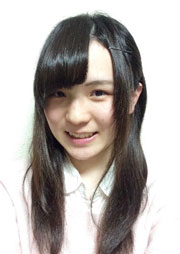 Marina Sugawara
Marina Sugawara
School: Sendai Saiyo Gakuin College
Hometown: Sendai City, Miyagi Prefecture
“When the Great East Japan Earthquake hit, I was in my first year of high school. During my Sophomore Year in college, I had the opportunity to hear from a nurse who helped out at various evacuation centers in Tohoku after the disaster, and became interested in becoming a disaster nurse who can support strong community ties in times of crisis.
Since the disaster, a great number of people have suffered from psychological issues. Not being able to express their anxieties has become harmful to the well-being of people. I began to contemplate ways I can help to prevent or alleviate these psychological issues. I believe that as a nurse, it will become extremely important to interact and support those who are suffering, and truly cherish the “people-to-people spirit”. By participating in this program, I wish to gain a deeper understanding of disaster nursing, and help spread the knowledge gained in order to meet the needs of the people I treat.”
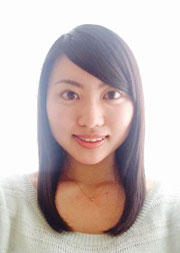 Soyoka Fujisawa
Soyoka Fujisawa
School: Miyagi University, School of Nursing
Hometown: Sendai City, Miyagi Prefecture
“People have different values and perspectives depending on their age or experience level, their race or culture. However, I don’t think many people have ever been ‘mentally prepared’ for death. I have experienced this during the Great East Japan Earthquake. To stop more people from experiencing this horror, I will share my experience and emphasize the importance of strengthening local communities.
During the disaster, when I heard on the radio that 200 to 300 bodies were found in the waters near my home, I still couldn’t get in touch with my family and prepared to hear about their deaths. I would not wish this feeling on anyone, and decided to participate in this program to study what the global standard is for disaster nursing and how we should handle these difficulties brought on by disaster.
In the future, I would like to gain experience working as a nurse in Miyagi Prefecture and eventually work with Japan Overseas Cooperation Volunteers (JICA) to expand my support internationally. By participating in this program, I believe I will be able to further my knowledge on disaster nursing and local nursing through a global standard. As one who can talk about their experiences from the Disaster, I feel that I will be able to support the affected areas and its people with the knowledge I gain from this program.”
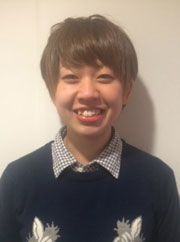 Ikumi Hoshi
Ikumi Hoshi
Age:19
School:Sendai Tokshu Nursing College
Hometown: Sendai City, Miyagi Prefecture
“Experiencing the March 11th Disasters became my catalyst to pursue disaster nursing. It was four years ago, but I still remember the day very vividly. During the first few days after the Disaster, I had no knowledge of what was occurring in other parts of Japan; only what was happening in my own town. After a few days, I was able to get access to information through newspapers and the radio, and finally realized the gravity of the situation. As I watched various news broadcasts on the disasters, what caught my eye were the self-defense forces, nurses, and doctors who were working selflessly day and night to save lives. I also heard that numerous international volunteer organizations were coming into Japan to aid in relief efforts, and realized that I was able to re-establish my life after the disasters because of their support. This awareness inspired me to want to be a part of this support system and thus created the base for my strong passion to become a disaster nurse. Since I experienced the 3.11 disasters first hand, I can support disaster stricken people in a unique personal way. When a disaster strikes, I hope to work on the front lines to save as many human lives as I can. In order to do this, I need to learn about various medical fields and gain new experiences. As a first step towards this goal, I am determined to see first-hand the state of disaster medicine and nursing in the United States.”
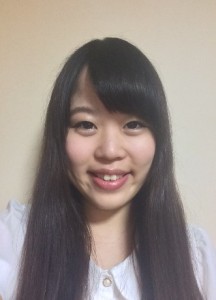 Mari Miura
Mari Miura
School:Sendai Medical Center School of Midwifery
Hometown: Sendai City, Miyagi Prefecture
“In the future, I hope to be a midwife in an international setting. In March of 2011, a frightening disaster called the Great East Japan Earthquake occurred. I still vividly remember how all lifelines were down, and my family and I slept huddled together in the freezing cold and pitch black darkness. When I was finally able to view the news, what came into view were the frightening images of the tsunami and the damaged coastal towns. I also saw images of people living in fear and anxiety at the evacuation centers. Unable to help those people, I began to think of ways in which I could support and contribute to the devastated communities.
It was during this time that I came across a news segment about a midwife who had helped a woman give birth on the day of the disaster. In a time of emergency, without the usual tools for childbirth available, I watched the midwives provide support, calmly protect the mother, and successfully deliver the baby; I was very moved. The news segment also showed them visiting various evacuation sites to give health advice to pregnant women and mothers, and made me realize that new lives are created and born even during times of disasters, and that it is especially during these times that our medical capabilities are put to the test.
In order for me to become a competent midwife, I need to learn about disaster nursing; not only from a domestic perspective, but also from an international perspective to help broaden my horizons. In the future, I hope to work as a midwife in an international setting and provide my professional knowledge to people all over the world.”
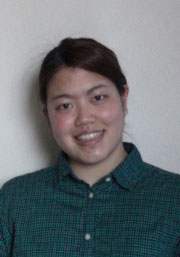 Natsumi Miyakawa
Natsumi Miyakawa
School: Ishinomaki Red Cross Nursing School
Hometown: Ishinomaki City, Miyagi Prefecture
“During the Great East Japan Earthquake my family survived, but my brother was on an artificial respirator and I ran around town desperately searching for electricity to keep him alive. The evacuation site was located at my middle school, a place I knew better than anyone else, and felt it was my duty to help out as much as I could: I cleaned the toilets, distributed food and water with a smile, and interacted with the elderly evacuees. The notion that “I am not the only victim, but that everyone is hurt” kept us all strong and allowed us to keep surviving.
Through this experience, I realized that even if we do not speak a common language, as long as there is the will to share your feelings and the will to listen to other’s feelings, we have the ability to understand one another. Although I was the one chosen to represent Japan on this program, the experiences and lessons learned are for everyone. What’s important is to “pass it forward” and I look forward to sharing the wealth gained from this program to all. Right now I only know about disasters from my own experiences and certain media coverage, but by studying disaster nursing and interacting with numerous people from all walks of life, I hope to spread my knowledge of the disaster, not only within Japan but internationally as well.
In the future, I haven’t decided whether I want to work as a nurse at the Red Cross Society, travel to developing countries as a member of the JICA workforce, or stay and teach health education to children, but I hope that I will be able to gain more insight through this program. I look forward to meeting those with the same mindset to connect internationally, share our experiences, and work towards a better brighter future together.


